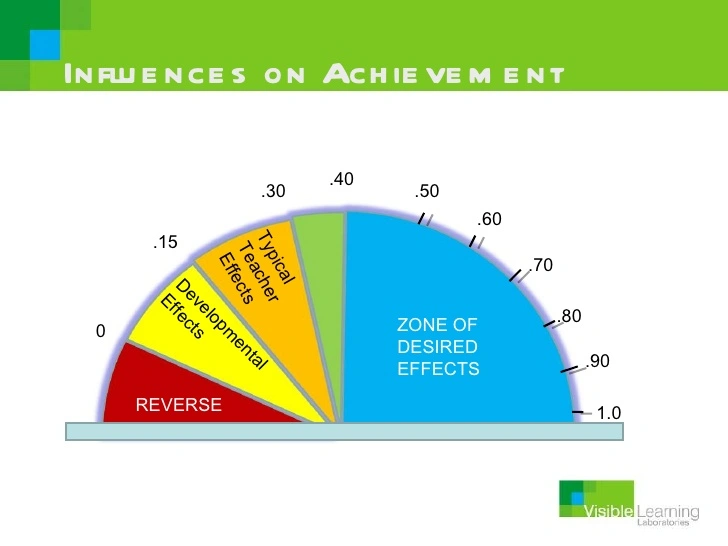John Hattie has spent much of his career listing effect sizes correlating school, teacher, and student factors to student achievement. Here he lists 195 influences of student achievement along with their effect sizes. For example, he lists creativity programs, providing formative evaluation, teacher clarity, and interventions for students with learning disabilities as factors that influence student achievement with an effect size greater than 0.4.
His work is important for two reasons:
- His list of effects forms a normal curve with a mid-point effect size of 0.4 (using Cohen’s d). Many have been using Cohen’s rule of thumb interpretation of effect sizes (small effect = 0.2; medium effect = 0.5; large effect = 0.8), but this interpretation has been meaningless in educational interventions, and has led many to say that any positive effect on student achievement is “good.” Hattie sets a bar for effect sizes at 0.4 and concludes that typical teaching provides effects between .15 and .30. He implores us to go well beyond typical teaching effects.

- Hattie’s method of pooling effect sizes can be adopted to discuss effects across programs. The National Science Foundation (and other federal education funders) have searched for mechanisms to broadly explain the merit and worth of a body of programs, and effect sizes give us a broad approach to do this. Naturally, we must be cautious about using effect sizes because it may be easy to inflate them, the named effect might contain multiple other factors, and the outcome variable (student achievement) may be difficult to accurately measure. Still, in the absence of mandating the same instruments across programs, effect sizes give us a method for pooling our data and supporting agencies that need to account for their funded programs.


Leave a comment